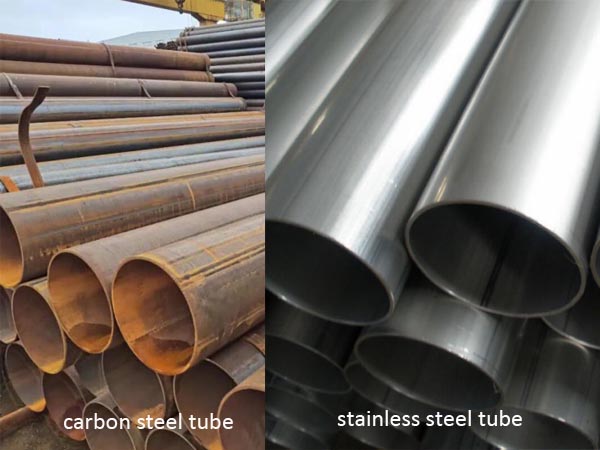
In daily life, carbon steel tube (cs tube) and stainless steel tube(ss tube) are one of the most commonly used piping products. Although they are both used to transport gases and liquids, their materials vary widely. This article will conduct a detailed analysis of the material differences and application fields of carbon steel tubes and stainless steel tubes from four aspects.
Carbon steel tube vs Stainless steel tube:
Due to the difference in their chemical composition, carbon steel tubes have higher strength and hardness, while stainless steel tubes have better corrosion resistance. Therefore, their performance differences are obvious in their respective field-specific applications.

This is because stainless steel tubes have better corrosion resistance and toughness, and can withstand harsher environments.
Carbon steel vs Stainless steel:
1. Different appearance
Stainless steel is composed of chromium, nickel and other metals, so the appearance of stainless steel is bright silver, smooth in appearance, and has very good gloss. The composition of carbon steel is an alloy of carbon and iron, so the color of carbon steel is gray and the surface is rougher than stainless steel.
2. Different corrosion resistance
Both carbon steel and stainless steel contain iron. Everyone knows that iron elements will slowly oxidize when exposed to the environment, leading to surface rust. However, stainless steel has added chromium. Chromium combines with oxygen better than iron, forming a chromium oxide layer, which can directly protect the steel from degradation and corrosion. The chromium content of carbon steel will also be lower, so the small amount of chromium cannot form a chromium oxide layer, so the corrosion resistance of stainless steel will be better than that of carbon steel.
3. Different wear resistance
Carbon steel is harder than stainless steel, but its weight will be greater and its plasticity
Also lower. Therefore, in terms of wear resistance, carbon steel is more wear-resistant than stainless steel.
4. Different prices
In the process of making stainless steel, a certain amount of other alloys must be added, but carbon steel is completely different from adding a large amount of other alloys, so the price of stainless steel is far more expensive than carbon steel.
5. Different ductility
Generally speaking, steels with higher carbon content are hard and brittle, while steels with lower carbon content are ductile and tough. The ductility of stainless steel will be better than that of carbon steel, mainly because the nickel content in stainless steel is relatively high, and the ductility of these elements is also better, so the ductility of stainless steel will also be better. Carbon steel contains high carbon content, low nickel content, which can be ignored, and poor ductility.
To sum up, there are certain differences between carbon steel tubes and stainless steel tubes in terms of material, cost, mechanical properties and application fields. Therefore, we should choose the most suitable pipeline product according to the specific application scenario. Of course, when choosing pipeline products, we should not only consider our own needs, but also pay attention to factors such as corrosion and pressure that pipeline products may face, so as to ensure the safety and long-term use of pipelines.
Read more: Carbon Steel Pipe Sizes or Stainless Steel ERW vs Seamless Pipe
Related information
